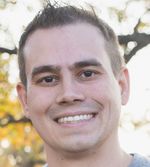I have written before on this blog about enjoying my work because of the industry I am in, security-as-a-service. But another reason I enjoy getting up each day is because of what I do as my day job. I'm a product marketer. I was not always a product marketer; I have my boss, Diana Massaro, to thank for that. Before I came to Armor Cloud Security, I had done jobs ranging from sales and marketing to operations to product management; I circled in this weird Bermuda Triangle of parts of an organization for many years of my career. Diana plucked me out of product management and gave me the opportunity to flourish as a product marketer recognizing my past experience building knowledge and influencing change in different areas of businesses but also the ability to communicate with each of those parties in a way that built alignment and consistency across the business. The below chart is a great representation of where a product marketing professional sits within an organization and how they deliver information across the business to ensure alignment and growth while bringing a product to market.

As you can see in the chart, a product marketer sits in between product, marketing, sales and customer success organizations. They have the ability to be catalysts for change or can execute poorly and kill a company's ability to go-to-market because they are responsible for facilitating consistency of information and messaging about what the product does, how it operates, and the service delivered with it. If the communication fosters consistency and collaboration than a successful go-to-market run is more likely than if information becomes disorganized, misaligned, or dominated by one side of the business. A product marketer supports customers of the business from the time they are in the funnel evaluating the product and how it can meet their business needs to the post sales experience as they help the customer grow with the business and be successful together.
Product management ultimately feeds product marketing new products, features, and a product roadmap/vision of where they are taking the company's product portfolio. Product marketing then begins it's interactions with other parts of the organization and facilitating information flow at different stages of the buyer's cycle. As a point of clarification, product marketing should be involved with what is coming on the roadmap far enough ahead that it can begin it's enablement work early on in the Product Lifecycle (PLC). If your company only involves product marketing after a product launch then you are not setting yourselves up for go-to-market success. It is one of the things that will NOT bring joy to a product marketer. Product marketing simultaneously works with product management by giving them market feedback into launches and what they are hearing in terms of market demand in the industry for particular roadmap features and competitive insights.
During the pre-sales process product marketing is feeding information about a product launch to their counterparts in marketing (PR, Demand Gen, Social) with technical collateral and market messaging for those new product launches to enable them to do their job to drum up marketing qualified accounts and leads for the business. The whole goal of these initiatives is to help contribute to the marketing sides of the sales velocity equation. They simultaneously contribute to sales enablement, ensuring that sales understands the problems they are solving for the market and how to entice prospects in the market that the solution meets their needs (the elusive product-market fit).
Post-sales product marketing works with marketing and customer support with two main functions in mind: 1) helping customers be successful using the product and accomplish the objectives they wanted to achieve with the product they were promised; and 2) reducing churn and growing additional revenue opportunities for the business through a focus on channel marketing, customer support enablement and upsell activities. Beyond product marketing getting to influence many parts of the business and influence it in a way that can make or break go-to-market success, I find 3 specific joys in product marketing that put a smile on my face each day at work.
Joy #1: Collaboration, communication, and connectivity - the 3 C's of product marketing
I've already talked about this joy quite a bit in the above paragraphs but we'll elaborate a little more here. In my job I get to see the power of and practice the power of communication daily. The healthy and honest flow of communication within an organization is fundamental to any hope at alignment and ability to execute a go-to-market strategy. Communication is powerful because it's an inherently collaborative act. We are always trying to communicate with someone and bring them along to the understanding of the world that we are trying to represent in our communication. It connects people and allows them to understand each other in hopes of working together to better outcomes. When people avoid connecting, working on problems together, and not communicating or not being honest or consistent in their communication then a company is likely to fail. It's the foundation of any great team and their ability to get work done together. Being able to work with others daily and foster positive dialogues about how we are moving through life together and working together in this moment to change the world excites me and brings me joy.
Joy #2: Blending the technical and operational with the strategic
I've always fluctuated back and forth between the strategy behind product for organizations and the operational steps necessary to actually bring that strategy to fruition. Product marketing allows me to blend these two interest of mine and do activities that scratch both itches during the day. It is also keeps me close enough to how the sausage is made to appreciate the effort it takes to build and support a product; simultaneously, it keeps me detached enough to take a step back and see the forest through the trees strategically and make big bets on where the company can innovate to differentiate itself and leapfrog the competition. This blend brings me joy daily in the diversity of my day to day tasks.
Joy #3: The joy of the chase - finding product market fit
One of the hardest things for a company to do is to find product-market fit. Marc Andreessen defines product-market fit as being in a good market with a product that can satisfy the needs of that market. Beyond this simplistic but effective definition of product-market fit, I enjoy Andy Rachleff's thoughts on product-market fit as a value hypothesis:
"A value hypothesis is an attempt to articulate the key assumption that underlies why a customer is likely to use your product. Identifying a compelling value hypothesis is what I call finding product/market fit. A value hypothesis identifies the features you need to build, the audience that’s likely to care, and the business model required to entice a customer to buy your product. Companies often go through many iterations before they find product/market fit, if they ever do.” “When a great team meets a lousy market, market wins. When a lousy team meets a great market, market wins. When a great team meets a great market, something special happens.” “If you address a market that really wants your product — if the dogs are eating the dog food — then you can screw up almost everything in the company and you will succeed. Conversely, if you’re really good at execution but the dogs don’t want to eat the dog food, you have no chance of winning.”
As Sherlock Holmes once said in the books by Sir Arthur Conan Doyle, "The game is a foot!" Finding product market fit is like a Sherlock Holmes mystery; you have to use your analytical and strategic powers of deductive reasoning to go find a big market, build a product that meets its biggest needs, and then deliver that product to the market with a business model that is appealing. This mystery is often filled with ups and downs; you will end up pursuing clues based on your limited data sets and get frustrated at multiple dead ends. But ultimately it's about coming along for the ride and finding joy in the challenges and opportunities it presents. As Sherlock Holmes, "“Watson. Come at once if convenient. If inconvenient, come all the same.”
Or, Dilbert could be correct in his assessment of marketing's role in all this; it's just liquor and guessing:

To wrap up, I think it is important to take an assessment of the joys you get out of what you do on a daily basis in your work life (great tip for your personal life as well). It can help you appreciate your job, even on the days that it might be difficult to enjoy some of the grind. Product marketing brings me joy because of the collaboration and community it allows me to create at the office and the ability to focus on bringing alignment, consistency, and value to our messaging and unify how our product is represented internally and externally to the organization. What brings you joy in your job? Comment below!






Comments